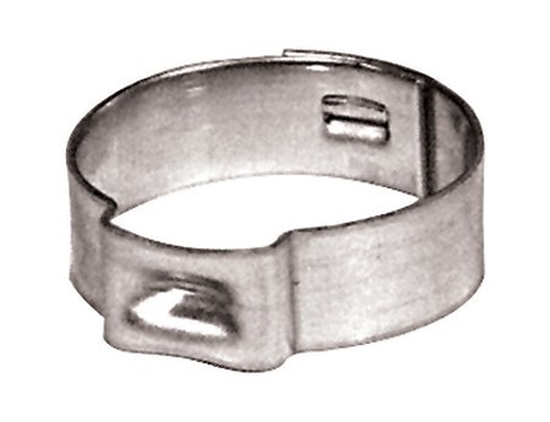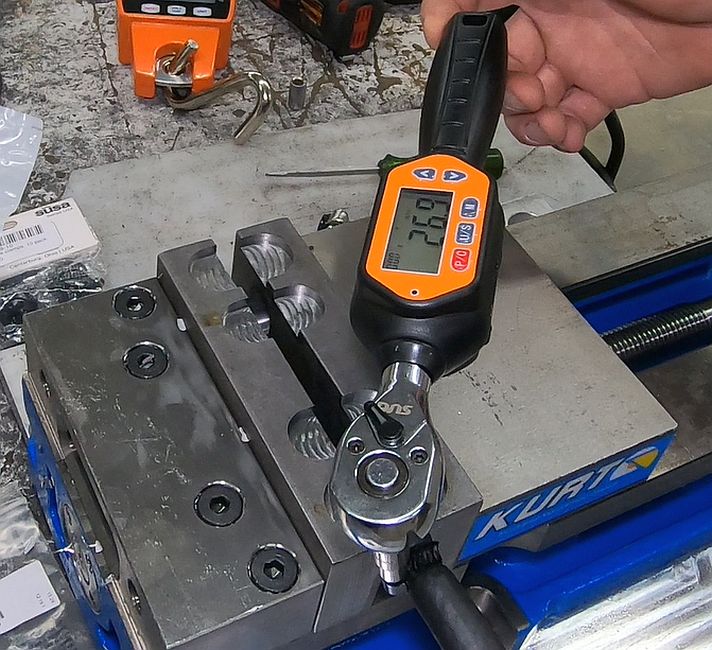DK Custom Products
Sponsor
This last Friday we decided to do some tests on different hose clamps.
Devin and I were both VERY Surprised at what we learned.
We have always tightened hose clamps down by visually noting how tight the clamp was getting on the hose.
This has worked for us on thousands of hose clamps, and I am sure that most of the billions of hose clamps currently in use around the world are tightened this way also.
What was amazing is how little torque it takes to get a hose clamp tightened down properly.
We purchased an inch pound torque wrench that was accurate down to 15 inch lbs, which is just a tad over 1 ft. lb.
Here is the surprising info we learned:
The photo below shows a hose clamp tightened down to the proper tightness.

It only takes 6-8 inch lbs to get it that tight.
18 inch lbs ( 1.5 ft. lbs ) is far too tight.
24 in lbs. ( 2 ft. lbs.) is so tight it is cutting into the hose.
Most hose clamps Failed (broke, and sometimes lost tightness, and sometimes did not) at 22-30 in lbs.
We were so surprised at how little it took we tested the calibration of our torque wrench.
These tests were done on 3/8" hose, using a quality, USA made worm drive hose clamp.
We also test a variety of other clamps, including pinch clamps.
How do you tighten a hose clamp?
Torque wrench, by feel, visually?
Any other info you can contribute would be useful.
We are going to publish a video of our test results, and include instructions on how to properly tighten a hose clamp. We would like to include any useful info you have that we may not already have in our footage.
Thanks,
Kevin
Devin and I were both VERY Surprised at what we learned.
We have always tightened hose clamps down by visually noting how tight the clamp was getting on the hose.
This has worked for us on thousands of hose clamps, and I am sure that most of the billions of hose clamps currently in use around the world are tightened this way also.
What was amazing is how little torque it takes to get a hose clamp tightened down properly.
We purchased an inch pound torque wrench that was accurate down to 15 inch lbs, which is just a tad over 1 ft. lb.
Here is the surprising info we learned:
The photo below shows a hose clamp tightened down to the proper tightness.

It only takes 6-8 inch lbs to get it that tight.
18 inch lbs ( 1.5 ft. lbs ) is far too tight.
24 in lbs. ( 2 ft. lbs.) is so tight it is cutting into the hose.
Most hose clamps Failed (broke, and sometimes lost tightness, and sometimes did not) at 22-30 in lbs.
We were so surprised at how little it took we tested the calibration of our torque wrench.
These tests were done on 3/8" hose, using a quality, USA made worm drive hose clamp.
We also test a variety of other clamps, including pinch clamps.
How do you tighten a hose clamp?
Torque wrench, by feel, visually?
Any other info you can contribute would be useful.
We are going to publish a video of our test results, and include instructions on how to properly tighten a hose clamp. We would like to include any useful info you have that we may not already have in our footage.
Thanks,
Kevin










